
365: How to Choose Binding, Paper & Finishes for Calendar Printing
Whether you’re printing one calendar or 10,000 for your family, business promotion or retail sales, here’s a rundown on what’s available at Smartpress. Check out all the calendar printing options we offer and learn about the differences in paper, binding, finishing and how to make sure you get the best calendar for your effort.
Key Takeaways
- Wall, desk and magnetic calendars each serve different purposes and come with various binding options (saddle stitch, wire coil, spiral coil), which affect usability, appearance and layout requirements.
- Coated paper enhances photo quality but isn’t ideal for writing, while uncoated paper is better for notetaking and typically includes recycled options. Coated one-side (C1S) offers a hybrid approach suitable for calendars.
- Finishing options like UV coating, Soft Touch laminate and shrink wrapping\ protect the calendar and enhance its retail readiness but may limit writeability, so they should be applied strategically.
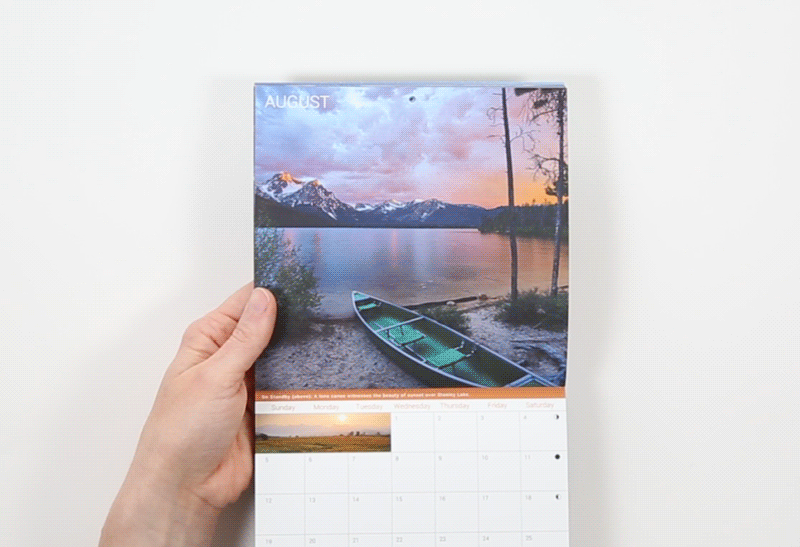
Calendar Printing, Day by Day
Among all the artifacts that technology has tried to snuff out few have proved more enduring than the humble calendar. Sure, your Outlook calendar has all your meetings and calls coordinated in 15-minute increments shared across your organization. But does it have a photo of the Grand Canyon on it? Can you jot a phone number on it? Doodle the number eight into a snowman? Truly embrace Inktober?
Re-enter the printed calendar, that mainstay of mall kiosks, year-end promotions and family refrigerators. Doggedly enduring and fairly priced, the passing of each month is marked by a new image and a fresh grid of boxes and numbers on crisp paper, just waiting to meet your pen.
The quality of digital printing, the ease of online ordering and the efficiency of shipping has made creating custom calendars for retail sale or personal posterity in reach of anyone. And with a little knowledge about our calendar printing options, style, paper and finishing, making your own calendar that’s memorable—at least for a year—is easier than ever.
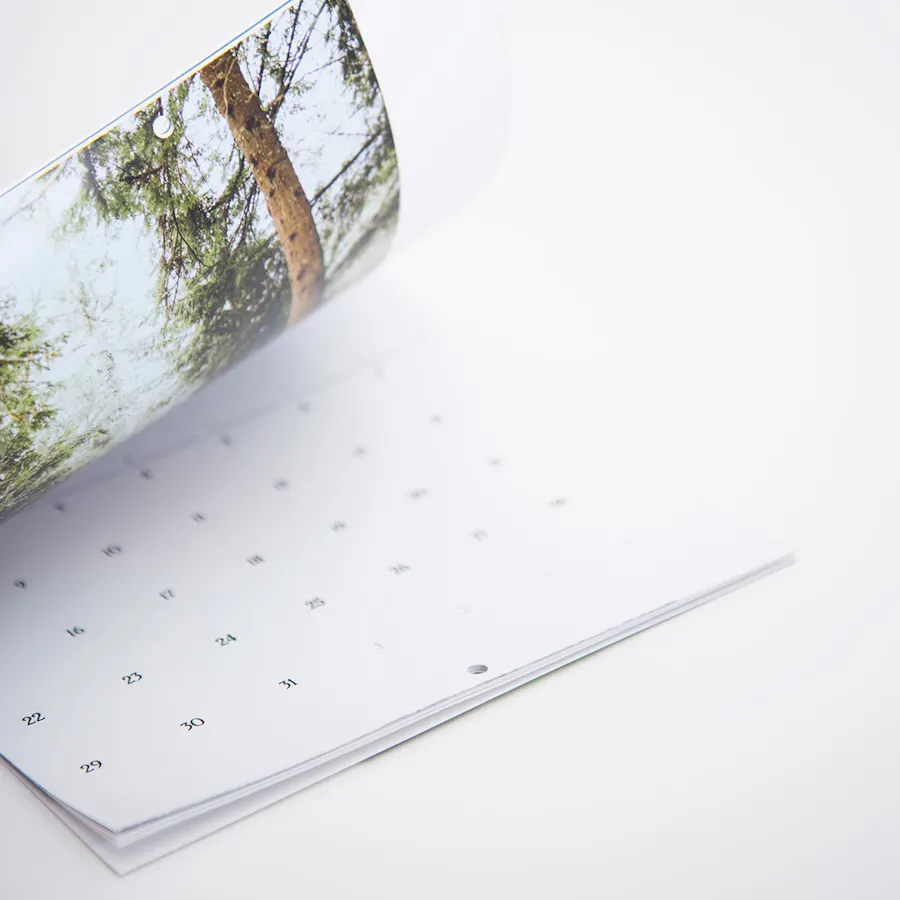
Wall calendar with drill hole for hanging
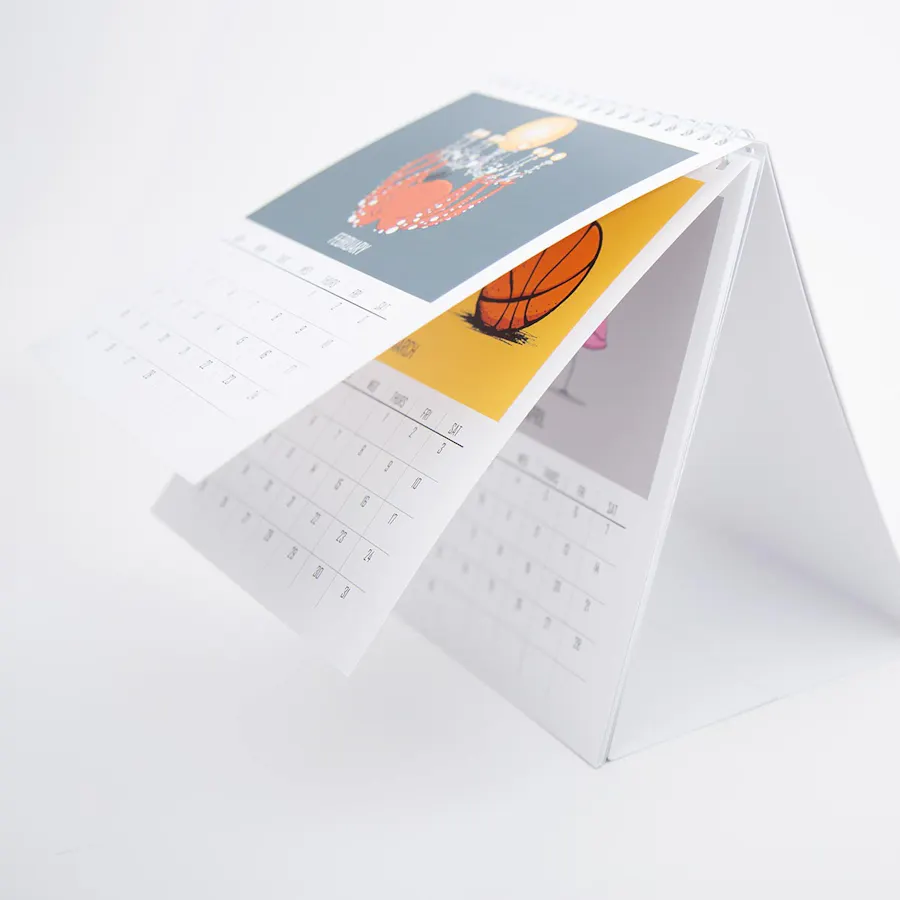
Stand-alone desk calendar with wire coil binding
Selecting a Style for Custom Calendars
Three main styles of calendars dominate the market, each with its own utility. Wall calendars, the granddaddy of the sector, hang in kitchens, break rooms and cubicles everywhere and are broken down by their bindery options: Saddle Stitch Calendars, Wire Coil Calendars and Spiral Coil Calendars. Wall calendars offer the most size and finishing options.
Desk calendars, the smaller cousin, give a compact desktop view of the passing of months. Wire-bound and propped up with a table tent base, desk calendars feature an image and the calendar grid on the same page.
Finally, magnetic calendars present the year at a glance on a single sheet with a single image, magnetized to hold fast to file cabinets and refrigerators alike. Lightweight and easily mailed, magnetic calendars are popular, inexpensive promotional items.
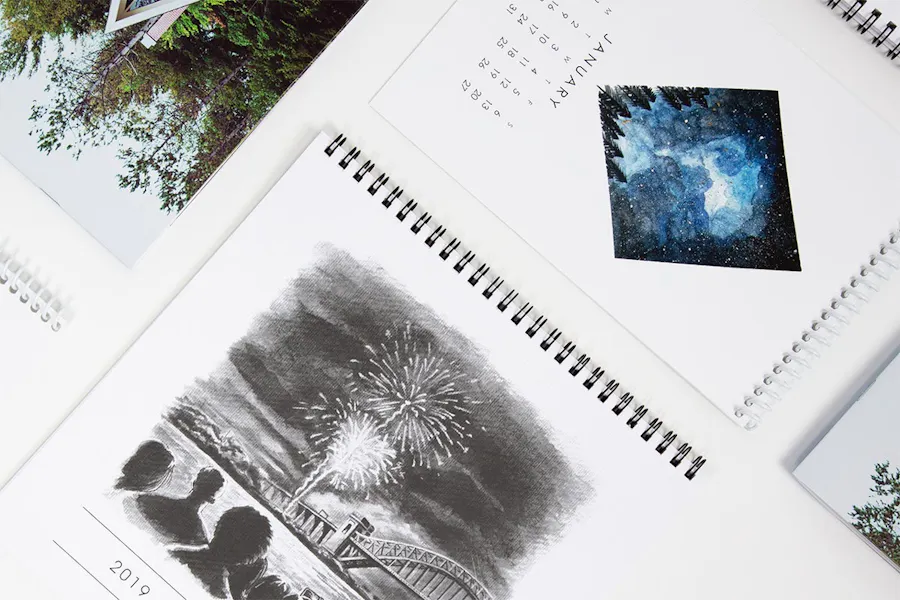
Selecting a Size That Makes Sense
Each type of calendar has common sizes associated with it. Wall calendars are typically 11˝x 8.5˝, while desk and magnetic calendars are typically smaller. Calendar designers, however, don’t need to stick with the defaults.
Depending on the capabilities of the press and bindery equipment, thinking outside the letter-sized box is an opportunity that you shouldn’t miss with our online printing services. Know the maximum and minimum size capabilities before you start designing your calendar, then take advantage of how custom sizing can make your project unique.
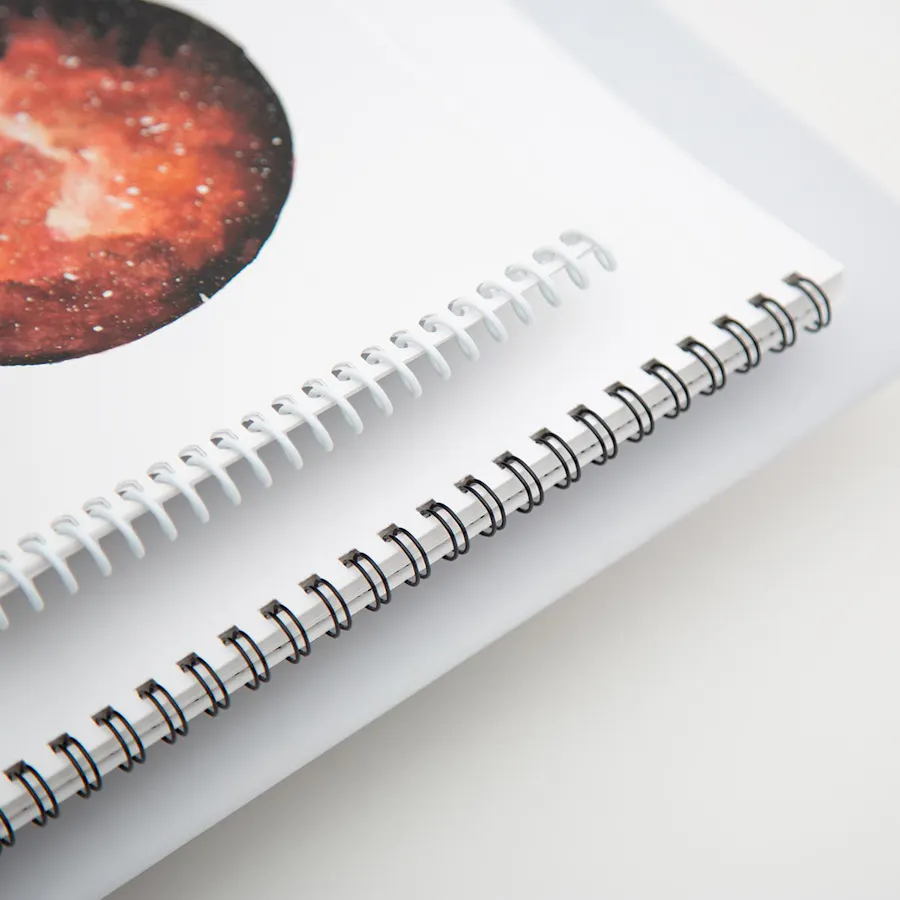
Spiral coil, wire coil, and saddle stitch binding options
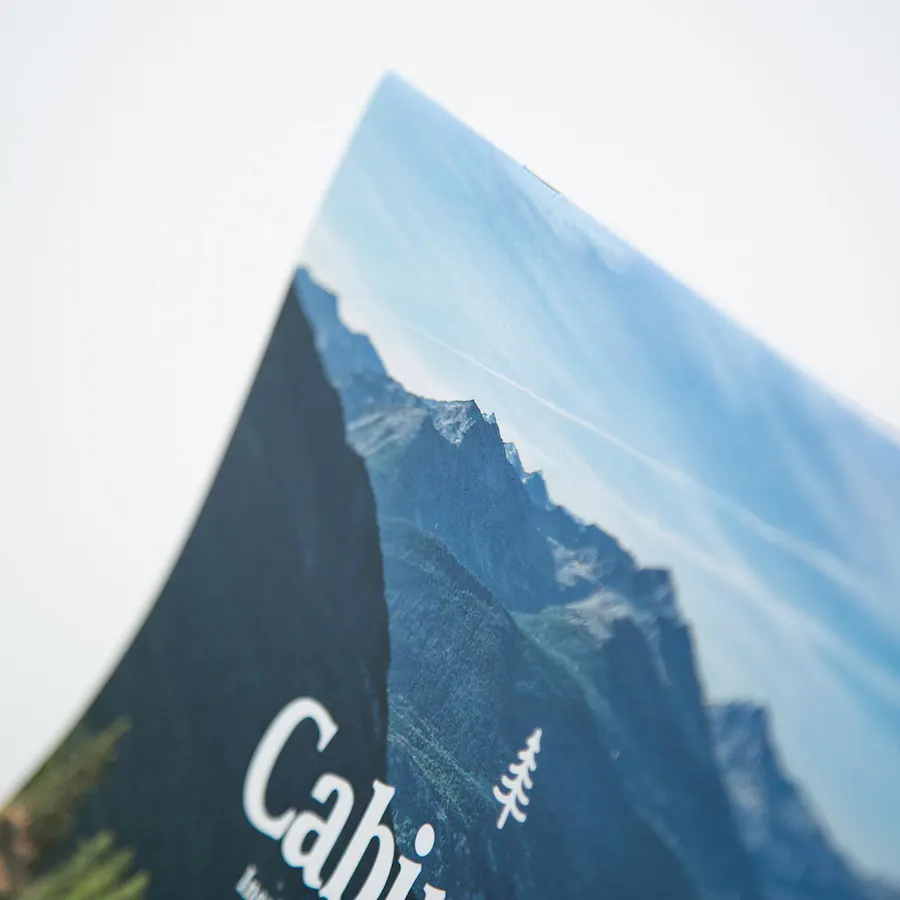
Saddle stitched calendar pages are folded (the saddle) then stapled, or “stitched”
Selecting a Binding That Fits the Format
In the online printing world, the way pages are held together—the binding—affects both the calendar’s utility and how it needs to be laid out. Saddle stitching, wire coil and spiral binding each bear consideration depending on your calendar printing needs.
How a calendar hangs on the wall is also a consideration. Typically, with calendar printing, this is simply with a single hole drilled through the pages, centered at the top. However, hanging wire coil-bound calendars have a wire hanger built into the binding, so your calendar displays one sheet per month, with the image and grid on the same page. Understanding your bindery options will help you decide how to lay out your calendar.
Economical and easy to mail, saddle stitched calendars have pages that are folded (the saddle) then stapled, or “stitched.” Easily the most common calendar type, these feature an image on the top half and the calendar grid on the bottom.
Wire coil binding, including hanging wire coil binding, are bound with a metal spring-like wire that also allows 360° rotation and also lays flat. Just like saddle stitched calendars, wire coil-bound calendars feature an image on the top half and the calendar grid on the bottom.
Spiral coil calendars are bound with a plastic coil that allows the pages to flip over a full 360° and lays flat, whether hung on the wall or set on a desk. Coils are often available in a variety of colors, so looking for something other than black or white is another opportunity to make your calendar unique.
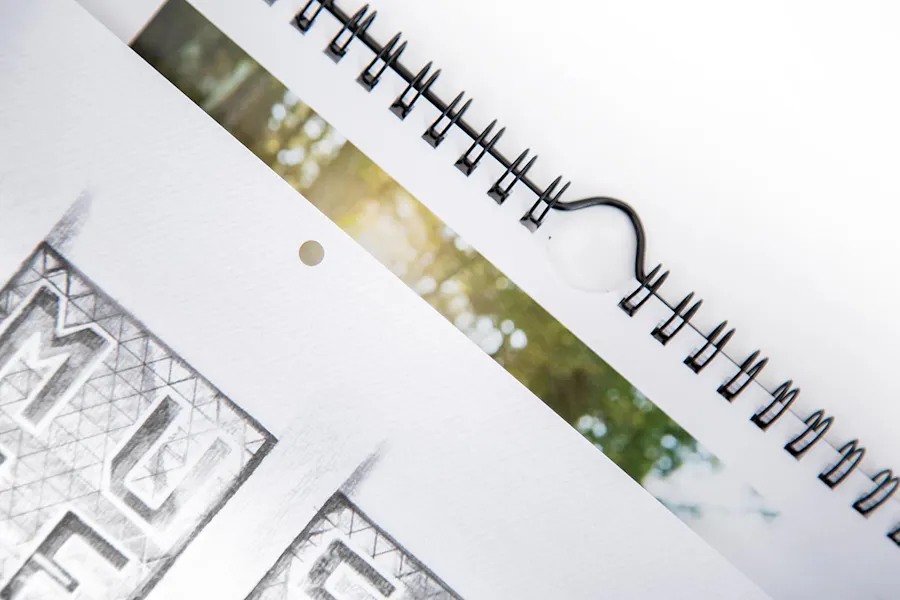
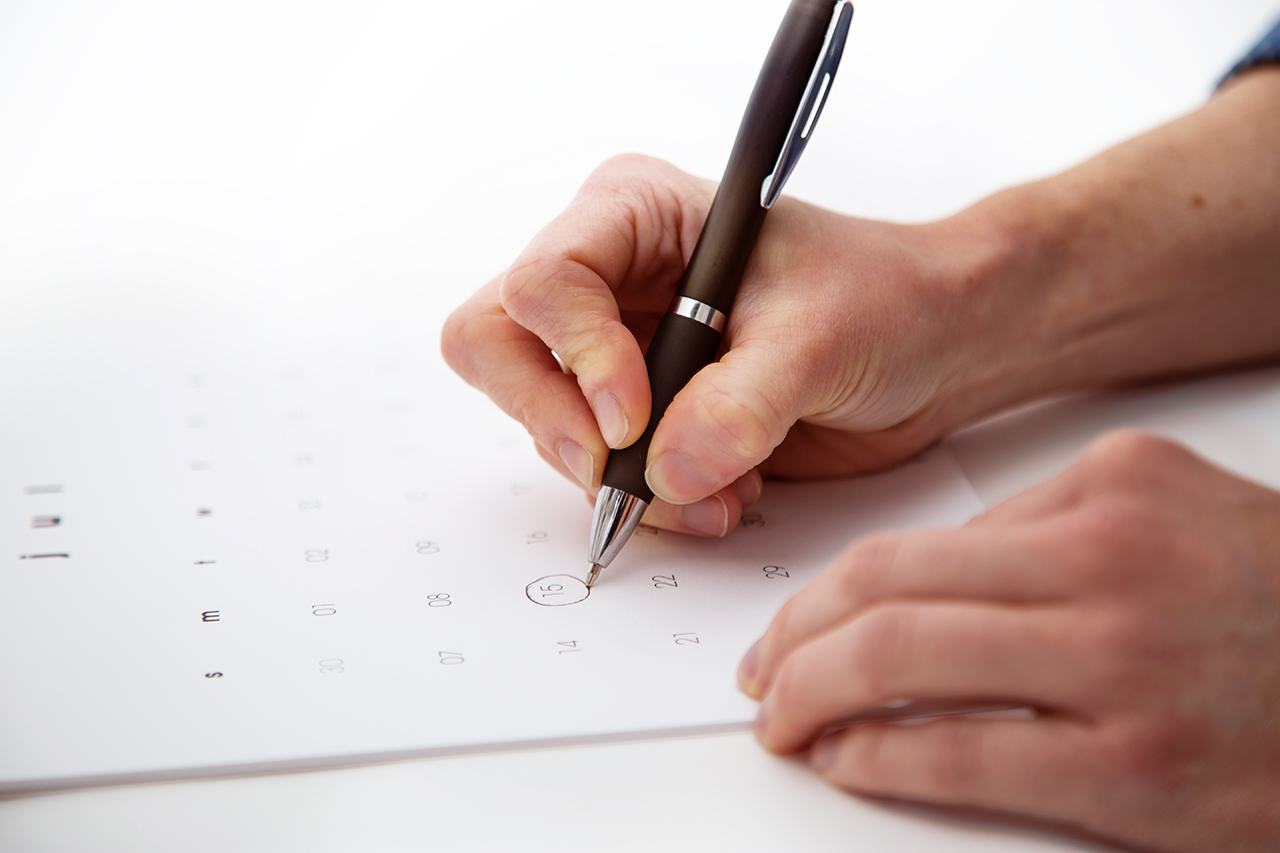
Choose an uncoated stock when writing on the paper
Selecting a Paper That Lasts
With wall and desk calendars, the variety of paper choices open up design possibilities as well. Options begin coated and uncoated paper and expand from there. Understanding the differences will help achieve just what you’re looking for.
(Dive deeper: Paper Sustainability: Why Printing with Smartpress is Eco-Friendly)
COATED PAPER
If you’re looking for vibrant color in your photos, coated paper is for you. It comes in a variety of finishes including gloss, semi-gloss or matte, but with each the coating prevents ink from soaking too far into the fibers of the paper. The coating also makes the paper difficult to write on with anything but permanent markers, like Sharpies. So your photos will look great, but don’t plan to jot down any spontaneous notes.
UNCOATED PAPER
If you want a calendar that’s easy to write on, look for uncoated paper. It’s doesn’t have a finish coating to seal the surface of the paper, which lets the paper absorb ink and makes for superior note-jotting with any nearby writing instrument. However, because ink permeates the paper because it lacks a coating, images can appear a little dull and flat. It’s an effect that some designers may find disappointing and others find desirable. Also, if you’re looking for recycled paper, you’ll usually find it within uncoated options.
COATED ONE-SIDE PAPER
C1S paper, also known as “coated one-side,” offers the sharp photo reproduction of coated paper on one side with the universal writeability of uncoated paper on the other. So on a coil-bound wall calendar, the photo on the top half can be shiny while the calendar grid below is flat.
Each paper has a variety of weight options, typically ranging from light 80# text to thick 120# cover. (In paper lingo, the # refers to “pound” and is based on an arcane matrix of measurements.) Your weight options will vary depending on press capabilities, but in general heavier paper tends to feel more luxurious, lighter paper more utilitarian. Your paper selection is another opportunity to make your calendar unique.
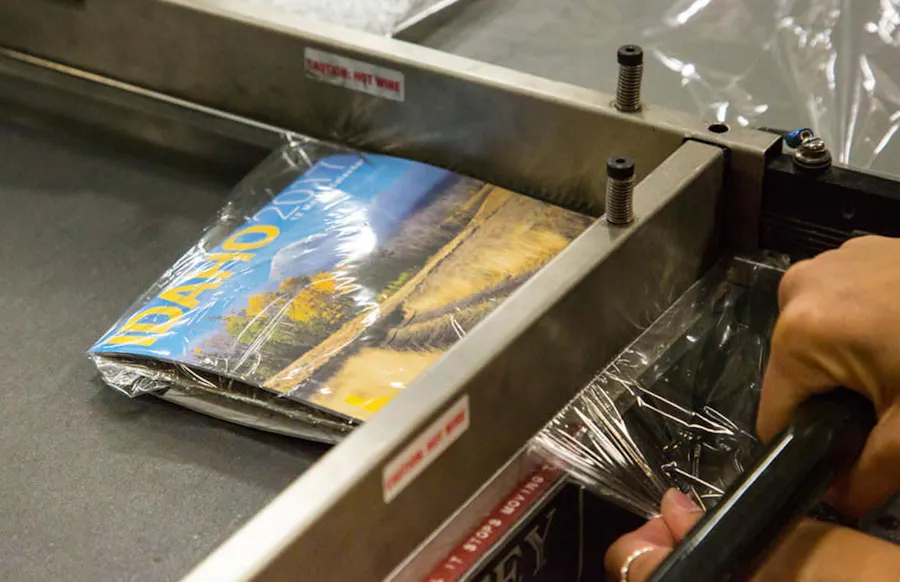
shrink wrapping your calendar in plastic increases durability
Protecting Your Calendar
After you’ve selected your bindery and paper options, a number of finishing options are available that will help protect your project from damage.
To protect your calendar from scuffing, scratches, and fingerprints, look for a UV (or ultraviolet) coating. A shiny liquid coating applied to the printed surface and then cured using ultraviolet light into a smooth, plastic-like sheen, UV coatings are available in many options starting with gloss and matte.
Keep in mind that adding a UV coating will limit your ability to write on your calendar, so consider only adding it to pages with images or to the outside cover. UV coating can only be added to coated stock.
Soft Touch laminate is another option to consider for the outside cover of wall calendars. A distinct, velvety, low-luster surface, Soft Touch resists fingerprints and scratches—added durability, especially in retail environments.
Finally, especially if your calendar will be sold in a retail environment, individually shrink wrapping your calendar in plastic will increase its durability. Just remember that customers will want to know what’s on the inside, which is why many designers show a preview grid on the back cover.
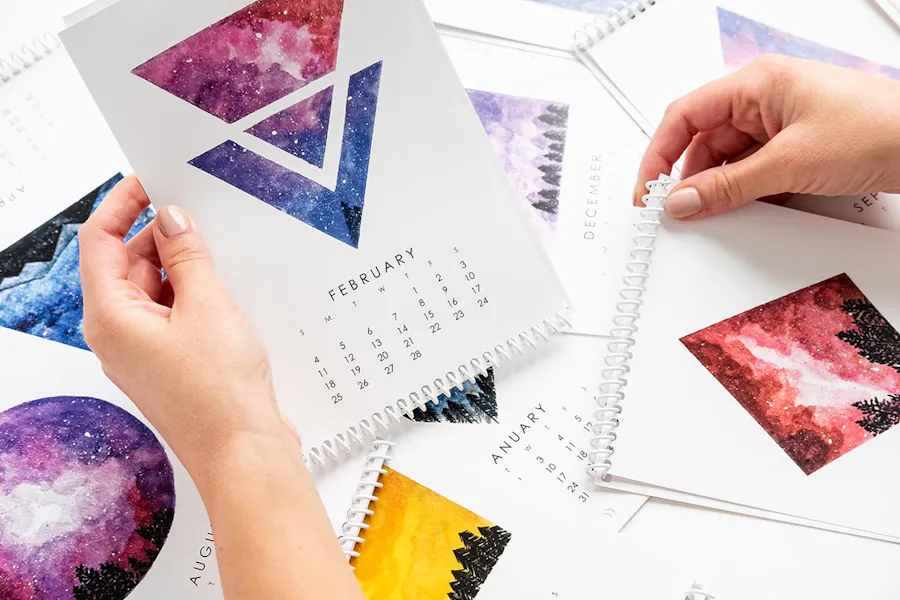
Spirl Coil Calendar designed by Christine Juang, A Juang Production
Don’t Miss the Opportunities
As a world-class online printer, Smartpress offers a wide variety of binding, size, paper and finishing options to design and print your own calendar. Learning what’s available and how to take advantage of the opportunities will make your calendar project stand out—whether on your mom’s fridge or on retail shelves around the world.
“This was my first experience printing calendars, and it was so easy,” said client Helen. “From the templates to the proofing process, Smartpress made the process very straightforward. The finished product is very high quality and exactly as pictured in the proof. I will definitely be ordering again!”
Hint: Want more calendar printing inspo? Get it here:
FEATURED CALENDAR DESIGNS
Equuvation Calendar Design by The Summer House
Flower Box Calendar Design by Texture Design Co
Dog Calendar Design by Lisa J Godfrey
2020 Calendar Design by Cabin Porn
Galaxy Calendar Design by Christine Juang, A Juang Production
2017 Calendar Design by She-Bear Gallery
Astoria Calendar Design by AJ the Awful
Desk Calendar Design by Audra Miller
Idaho Mini Calendar Design by Idaho Scenics
National Parks Calendar Design by Seth Lucas, Ello There